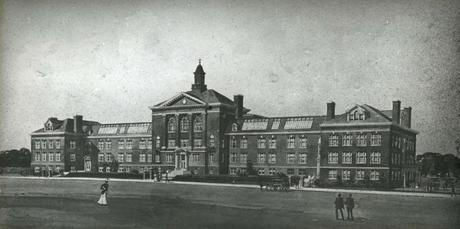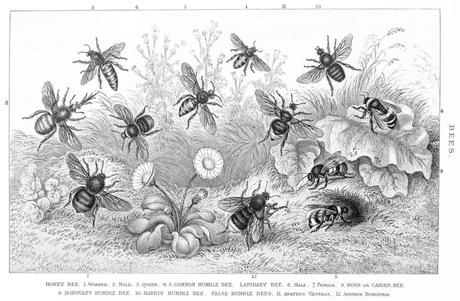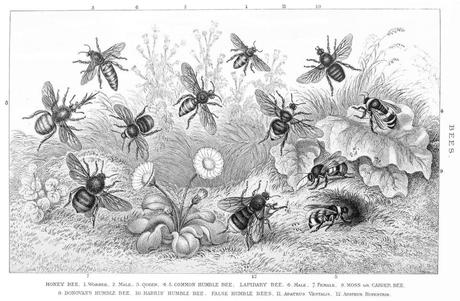CC BY-ND" src="https://s.yimg.com/ny/api/res/1.2/2Uvclj3RMN3kFShRj7Bdqw-/YXBwaWQ9aGlnaGxhbmRlcjt3PTk2MDtoPTU0NQ-/https://media.zenfs.com/en/the_conversation_us_articles_815/5cc521dda4e508 89b46b11a511bc7537″ data-src= "https://s.yimg.com/ny/api/res/1.2/2Uvclj3RMN3kFShRj7Bdqw-/YXBwaWQ9aGlnaGxhbmRlcjt3PTk2MDtoPTU0NQ-/https://media.zenfs.com/en/the_conversation_us_articles_815/5cc521dda4e50889b4 6b11a511bc7537″/>
On a crisp fall morning in 1908, an elegantly dressed African American man walked back and forth among the pin oaks, magnolias, and silver maples of O'Fallon Park in St. Louis, Missouri. After placing a dozen ramekins filled with strawberry jam on several picnic tables, biologist Charles Henry Turner retreated to a nearby bench, notebook and pencil at the ready.
After a mid-morning break for tea and toast (with strawberry jam on top, of course), Turner returned to his outdoor experiment. At noon and again at dusk he placed plates filled with jam on the park tables. As he discovered, honey bees ( Apis mellifera) were reliable breakfast, lunch and dinner visitors to the sweet buffet. After a few days, Turner stopped offering jam between noon and sunset, and only presented the treats at sunrise. Initially, the bees continued to appear at all three times. However, they soon changed their arrival pattern and visited the picnic tables only in the morning.
This simple but elegantly conceived experiment led Turner to conclude that bees can tell time and will quickly develop new feeding habits in response to changing conditions. These results were among the first in a series of groundbreaking discoveries Turner made about insect behavior.
During his distinguished 33-year career, Turner wrote 71 articles and was the first African American to have his research published in the prestigious journal Science. Although his name is little known today, Charles Henry Turner was a pioneer in the study of bees and should be considered one of the great entomologists of the 19th and 20th centuries. While doing research for my book on human interactions with insects in world history, I became aware of Turner's pioneering work in insect cognition, which informed much of his groundbreaking research into animal behavior.
Humble beginnings
Turner was born in Cincinnati in 1867, just two years after the Civil War ended. The son of a church warden and a formerly enslaved nurse, he grew up under the specter of Jim Crow-a set of formal laws and informal practices that relegated African Americans to second-class status.
The story continues
The social environment of Turner's youth included school and housing segregation, frequent lynchings, and the denial of basic democratic rights to the city's non-white population. Despite enormous obstacles to his educational goals and professional ambitions, Turner's tenacity pulled him through.
As a young boy he developed an enduring fascination with small creatures, recording and cataloging thousands of ants, beetles and butterflies. An aptitude for science was just one of Turner's many talents. At Gaines High School, he led his all-black class and secured his place as valedictorian.
Turner went on to earn a Bachelor of Science degree from the University of Cincinnati, and he became the first African American to receive a doctorate in zoology from the University of Chicago. Turner's groundbreaking dissertation, "The Homing of Ants: An Experimental Study of Ant Behavior," was later reproduced in the September 1907 issue of the Journal of Comparative Neurology and Psychology.
Despite his brilliance, Turner was unable to secure a long-term position in higher education. The University of Chicago refused to offer him a job, and Booker T. Washington was short of funds to hire him at the all-Black Tuskegee Normal and Industrial Institute in Alabama.


After a brief stint at the University of Cincinnati and a temporary position at Clark College (now Clark Atlanta University), Turner spent the remainder of his career teaching at Sumner High School in St. Louis. As of 1908, his salary was a meager $1,080 per year - about $34,300 in today's dollars. At Sumner, Turner - without access to a fully equipped laboratory, a research library or graduate students - made groundbreaking discoveries about insect behavior.
Research into the minds of insects
One of Turner's key findings was that wasps, bees, sawflies and ants were members of the Hymenoptera order - are not simply primitive automatons, as many of his contemporaries thought. Instead, they are organisms with the ability to remember, learn and feel.


By the early 20th century, biologists were aware that flowers attracted bee pollinators by producing certain scents. However, these researchers knew virtually nothing about the visual aspects of such attractions when the bees were too far from the flowers to smell them.
To investigate this, Turner hammered rows of wooden dowels into the lawn of O'Fallon Park. On top of each rod he attached a red disk dipped in honey. Soon bees began traveling from far away to his makeshift 'flowers'.
Turner then added a series of 'control rods' topped with blue discs that carried no honey. The bees paid little attention to the new "flowers," showing that visual cues provided guidance when the bees were too far away to smell their targets. Although a honeybee's ability to detect red remains controversial, scientists have determined that Turner's bees likely responded to something called achromatic stimuli, which allowed them to distinguish between different shades and hues.
Lasting legacy of an underrated pioneer
Turner's astonishing series of findings from three decades of experiments established his reputation as an authority on the behavioral patterns of bees, cockroaches, spiders and ants.
As a scientific researcher without a university position, he found himself in a strange niche. His situation was in large part the product of systemic racism. It was also a result of his commitment to educating young black students in science.
In addition to his scholarly publications, Turner wrote extensively about African American education. In his 1902 essay "Will the Education of the Negro Solve the Race Problem?" Turner claimed that trade schools were not the path to black empowerment. Instead, he called for widespread public education of African Americans in all subjects: "If we put aside our prejudices and try to provide the highest education to both white and black, in a few decades there will no longer be a Negro problem."
Turner was only 56 when he died of acute myocarditis, a contagious heart infection. He is survived by two children and his second wife, Lillian Porter.
Turner's scholarly contributions endure. His articles are still widely cited and entomologists have subsequently verified most of his conclusions.
Despite the enormous challenges he faced throughout his career, Charles Henry Turner was one of the first scientists to shed light on the secret lives of bees, the winged pollinators that ensure the well-being of human food systems and the survival of the biosphere. of the earth guarantee.
This article is republished from The Conversation, an independent nonprofit organization providing facts and trusted analysis to help you understand our complex world. It was written by: Edward D. Melillo, Amherst College Read more: Edward D. Melillo does not work for, consult with, own stock in, or receive funding from any company or organization that would benefit from this article, and has disclosed no relevant affiliations beyond his academic appointment.